Trouser Back
Sleeve and bodice front
Bodice Back
Trouser Back
Sleeve and bodice front
Bodice Back
Sleeve
Back trouser in progress (slides stopped at 27)
Updated photos, used a pink thread when I had done this in Soft Fab but it still shows up pretty well.
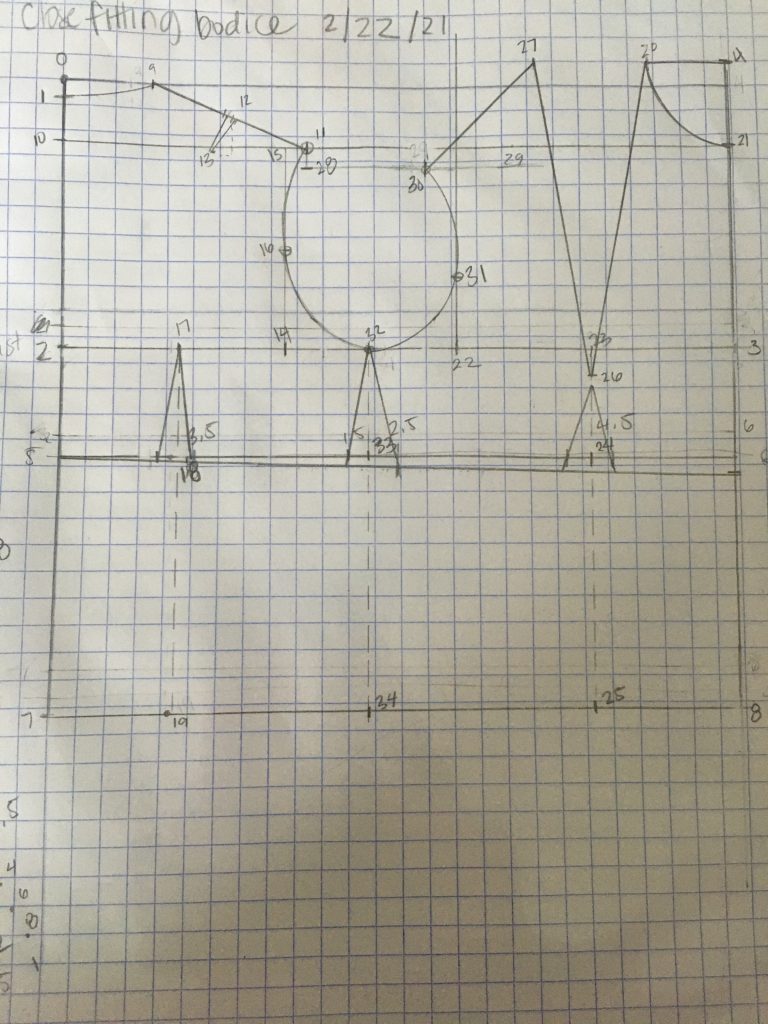
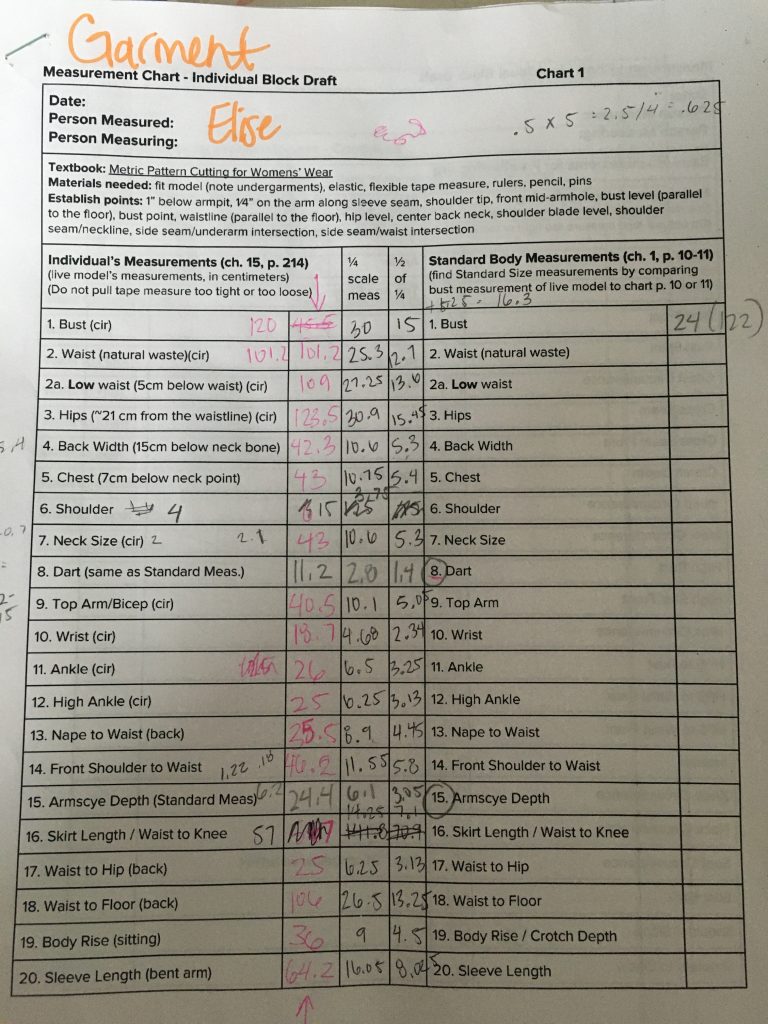

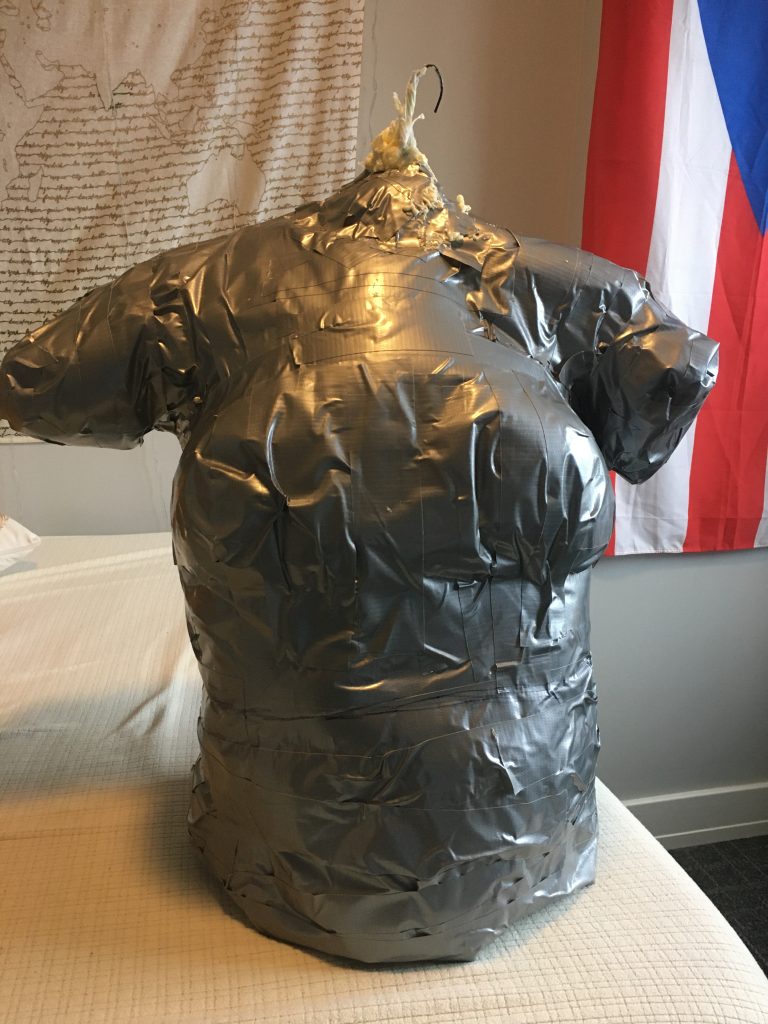
The article spoke about how the Caribbean is a very complex and diverse region. Native peoples to the islands had their own style of dress and colonizers brought different styles which ultimately mixed. Further mixing of style comes from tourism as well as the global fashion trends. We can also observe how the fashion communicates meaning or function. For example, Haitian Vodou has specific colors for celebrations and feast days. Similarly, some parts of the Caribbean such as the Bahamas dress a newborn in red or with a red ribbon to keep away the evil spirits. Cuba, Dominican Republic, and Puerto Rico have heavy Spanish influence in their colorful skirts and peasant blouses but involve African influence with their headwraps. Oftentimes we will see dress accompanied with dance or music. The other parts of the caribbean such as Jamaica, Trinidad, Antigua, Barbados, and the Bahamas involve “creole dress” which is a more deeply rooted African style. And we all know the Bermuda shorts that were a national style for men!
The content and specific sections about the different islands and peoples of the Caribbean is unique and inspiring. I find it fascinating that although these nations are in close proximity to each other, the diversity of cloth and its meaning is profound. From dress that has more religious meanings, to dress with spiritual meaning, to dress for festivals such as carnaval, it seems like such a rich cultural history is present in the way we look at dress. There are deep rooted historical and cultural influences in these traditions that really tell a story. I like how the narrative is constantly evolving and changing. It is important to save garments as they are relics of the past, a story that continues to unwind.
Photos of Garment

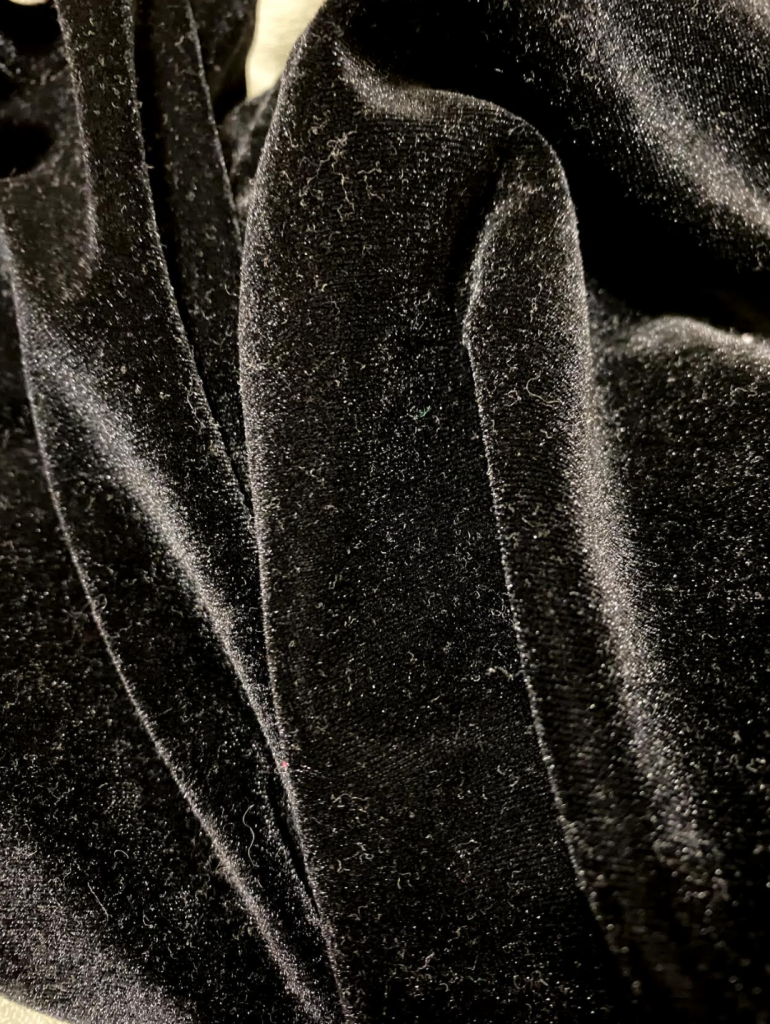
-Mules, Shoes, 15-16th century, Artist Unknown- Made from leather and velvet with embroidery
-Womans Hat, 1950, American artist-Made from straw and velvet
-Cocktail Suit, 1991-92, Gianni Versace -Velvet with gilt buttons
-Velvet dress, 1975-79, England house in business- Velvet
“Radical Decadence, Excess in contemporary feminist textiles and craft” by Julia Skelly. This chapter discusses how British artist Roxanne Hawksley uses items representing decadence, death and mortality in her works. These works often feature items made of velvet as a fabric that is considered to be luxurious and littered throughout royal portraits. Skelly describes how the artist explicitly juxtaposes decadent luxury fabrics like velvet with objects representing death and decay, creating intersections of poilital, visual, and material culture.
Velvet can be used from pants to dresses to even jackets. It can be a difficult fabric to work with, especially when using microfiber velvet as that does not exactly press well and may be difficult to control. When working with velvet, it is important to note that holes do not come out! That means you should pre-test your pattern and even have a sample swatch to see how the fabric reacts.
When sewing, the fabric needs to be relaxed every couple of inches. This means you should lift the foot and both layers or pieces of velvet to be able to sew evenly on it. Lastly, it is suggested to use double sided tape/adhesive to hold the fabric together when sewing, remembering to not sew on the tape but next to it.
Bonus:
Before the introduction of synthetic fibres in the 20th century, velvet was made from silk, which was very expensive and only accessible to those with high levels of wealth. It originate in 750 AD in Bagdad, before it made its way to the Mediterranean and the rest of Europe.
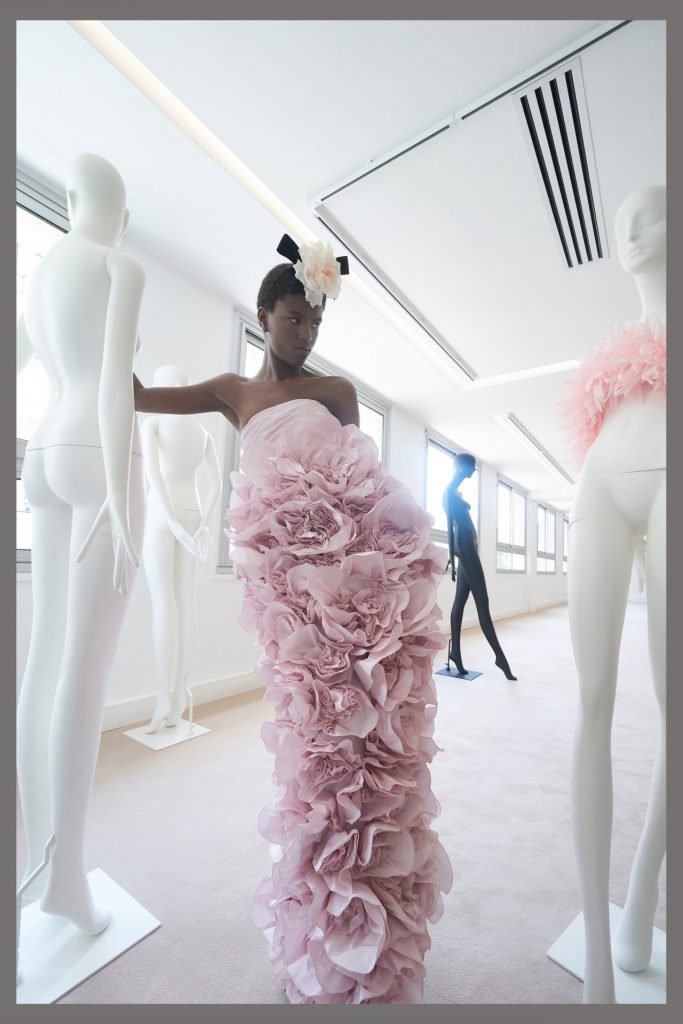

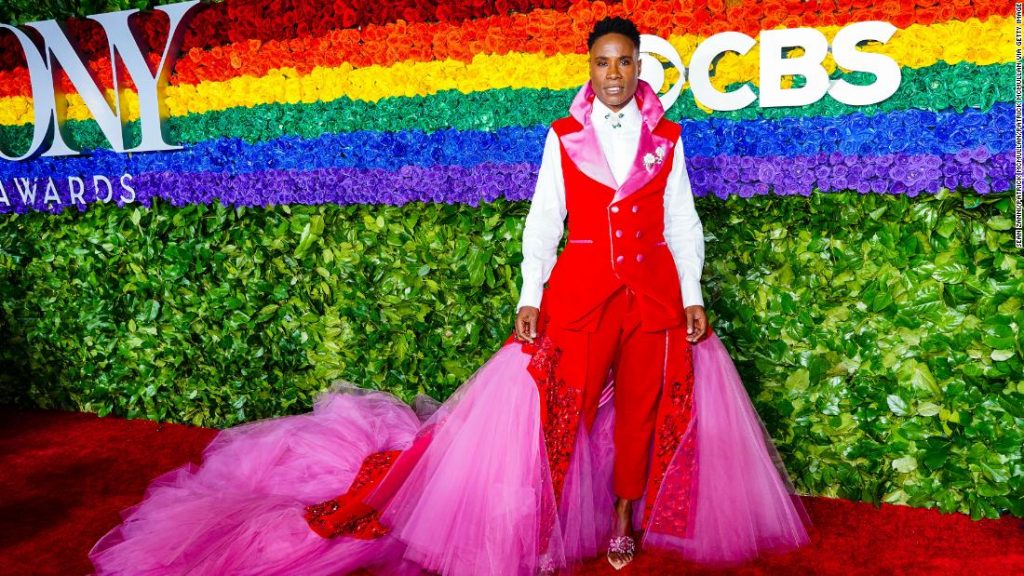
Although each of these examples above may be completely different from each other, I believe they highlight my diverse interests in garments and meaning making. As I personally draw inspiration from organic materials such as flowers and create pieces that are very much on the haute couture, can’t-wear-to-anything-at-all, type of pieces, I look towards the work of Giambattista Valli. This Italian designer has mad massive dresses with endless layers of tulle that are mesmerizing. I like the feeling of being mesmerized by a gown because I understand the craftsmanship that goes into making it. Furthermore, I enjoy garments that push the idea of even what a garment is, adding sculpture to it. Yes, this may be costuming when we look at the Puerto Rico gown by Joshuan Aponte, but, he has done drag gowns that involve these sculptural elements and even movement. See Miss Puerto Rico gown. The elements of big, bright, and loud are very inspiring to me because I think it shows personality.
Lastly, I am inspired by those who break gender “norms” and may dress however they please. I often am discouraged by the fashion industry for being very exclusive to a select body type, ability, and any type of diversity is lacking. I appreciate the tuxedo gown worn by Billy Porter as it is a gorgeous representation of how garments have no need being gendered and exclusive. So I have a large interest and am deeply inspired by garments that embody diversity and are made for the wearer to express who they are. I truly believe garments are a form of self expression and shouldn’t be a part of the binary norms of our society.